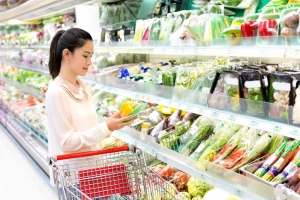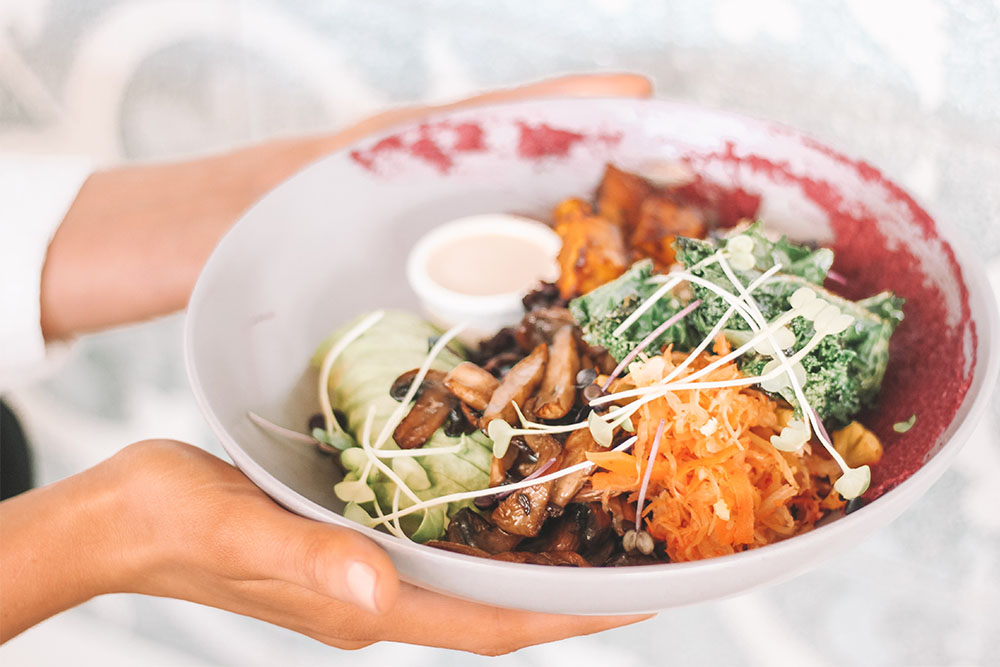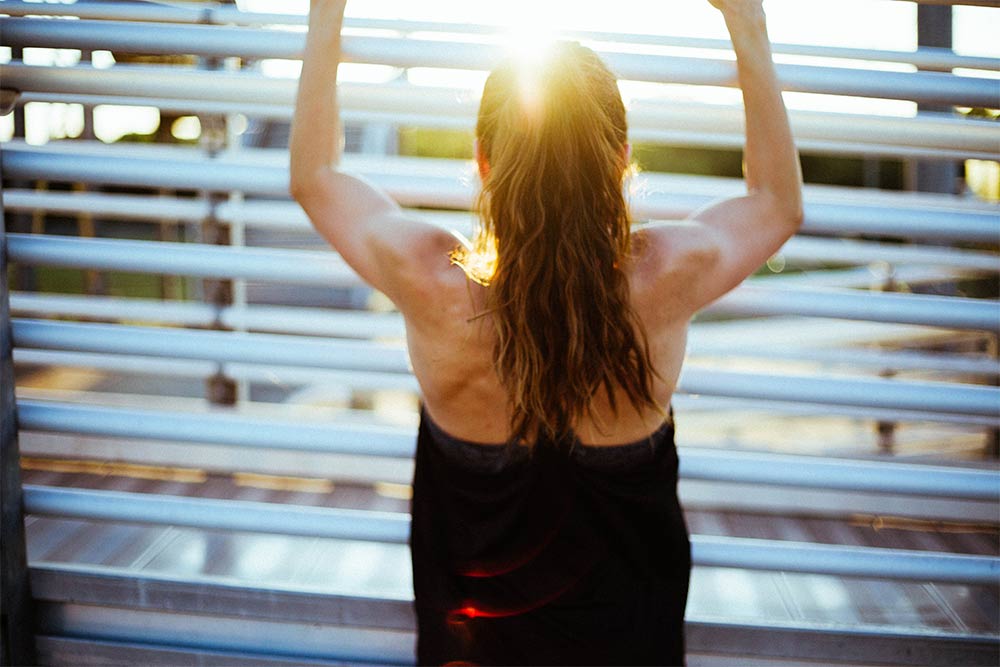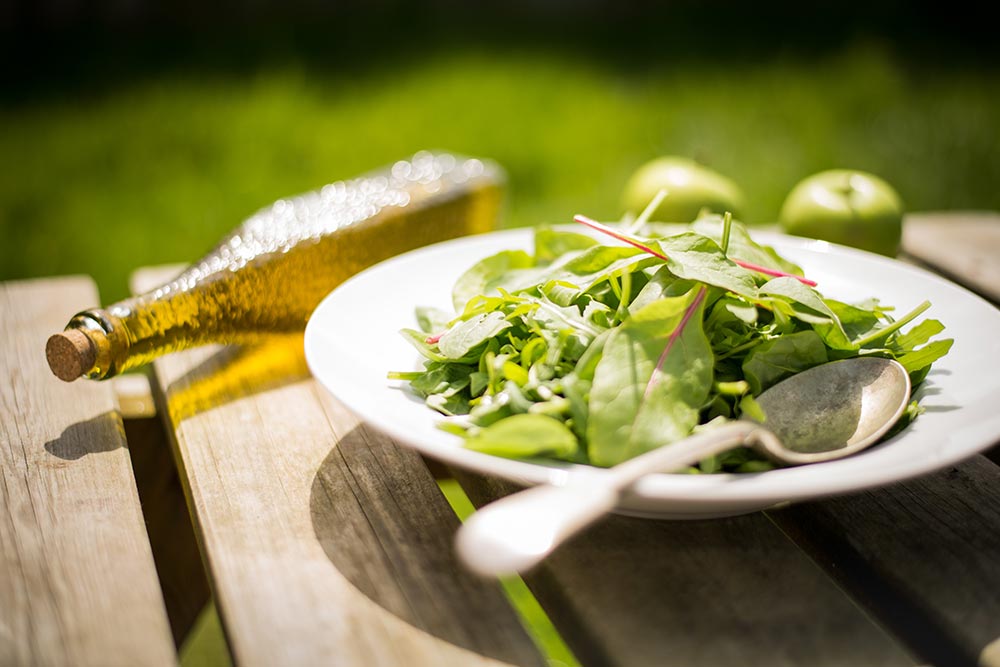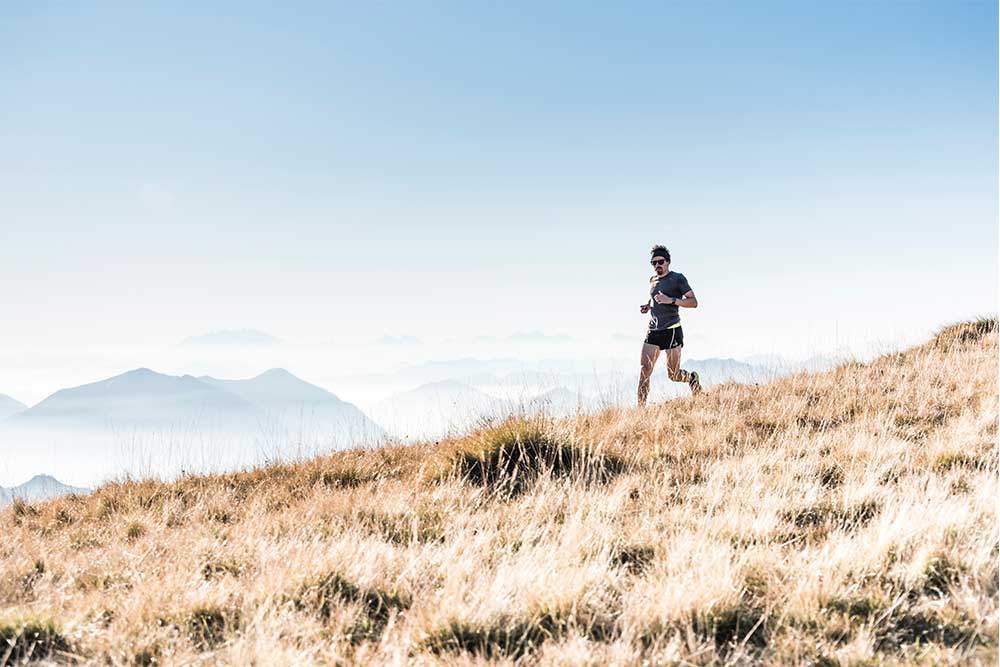6 Vegan Athlete Meal Plan Ideas to Boost Performance

Jessica Gillespie-Friesen
Animal products contain essential nutrients that contribute to proper body functioning but also contain a large amount of saturated fats and cholesterol leading to increased risk of cardiovascular disease and obesity (Kris-Etherton, Innis, American Dietetic Association, Dietitians of Canada, 20; Jenkins, Kendall, Augustin, et al., 2012; Jenkins., Wong, Kendall, et al., 2014). For this reason, many people have begun to follow the vegan diet – which excludes all animal products, including dairy, honey, and eggs – for health purposes (Clarys, Deliens, Huybrechts, et al., 2014). However, cutting animal products out of the diet has potential health consequences as plant-based nutrients can be harder to absorb, predisposing vegans to macronutrient and micronutrient deficiencies (Hotz & Gibson, 2007; Gibson, Raboy & King, 2018; Appleby & Key, 2016). This begs the question, is it possible for athletes to perform at their best while following a vegan diet?
Studies conducted comparing the performance of vegan vs nonvegan athletes suggest that there is no effect on performance as long as the proper dietary considerations are taken into account (Nieman, 1999; Bean, 2017; Craddock, Probst, & Peoples, 2016).
The following paper will identify six essential considerations for vegan athletes and how to best combat potential nutrient deficiencies resulting from a vegan diet.
-
ENERGY
Consuming enough calories is essential for athletes because this is what the body converts into energy. Depending on body composition, sex and intensity/type of training, athletes may need anywhere between 2000-6000kcal per day (American College of Sports Medicine, American Dietetic Association, and Dietitians of Canada, 2000). Failure to meet energy balance can result in a weakened immune system, loss of muscle mass and faster exhaustion (Loucks, 2004). Some studies suggest that vegans consume fewer calories than omnivores due to the lack of meat and increase in fruits and vegetables which have fewer calories (Clarys, Deliens, Huybrechts, et al., 2014). It is suggested that vegans eat more meals/snacks throughout the day to increase the amount of energy (La Bounty, Campbell, Wilson, et al., 2011). Good snacks to increase energy include dried fruit, nuts, seeds, and avocados (Drewnowski, Almiron-Roig, Marmonier, Lluch, 2004).
Related Article: Relative Energy Deficiency: Nutrition For Endurance Athletes
-
PROTEIN
Protein is used to repair muscle tissue that is broken down during exercise and helps in the storage of carbohydrates (Koopman, 2011). Athletes require slightly more protein than the general population (due to the use of protein as an energy source during exercise) and should consume between 1.2-1.7 g/kg of body weight of protein per day (Phillips & Van Loon, 2011; Antonio, Peacock, Ellerbroek, Fromhoff, Silver, 2014). A recent study suggested that protein quality, rather than quantity, may play more of a role when it comes to muscle mass gains (Phillips, 2016). This being said, most vegans (along with the general population) consume more protein than the recommended daily requirements. However, plant-based protein often has low bioavailability – meaning that it is more difficult to absorb – so it has been suggested that vegan athletes should increase protein intake by 10% (Leser, 2013). To achieve this extra 10%, vegans can seek out high protein vegan foods such as tofu, soy products, nuts, and beans (Craig & Mangels, 2009).
-
IRON
Iron is found within hemoglobin molecules and is essential for oxygen transport in the bloodstream (Rogerson, 2017). Although the recommended dietary intake of iron is officially the same for athletes and non-athletes, some studies have suggested that iron consumption should be increased by up to 70% in some athletes to counteract increased losses of this micronutrient during exercise (Whiting & Barabash, 2006). Iron deficiency is more commonly found among female athletes who follow a vegan diet (Alaunyte, Stojceska, & Plunkett, 2015). A deficiency in iron reduces endurance capacity and increases energy expenditure leading to quicker exhaustion (Longo, & Camaschella, 2015; Burden, Morton, Richards, Whyte, Pedlar, 2015). Vegans typically consume similar amounts of iron as omnivores, however, like protein, the bioavailability of plant-based iron is relatively low (Craig, 2009; Alaunyte, Stojceska, & Plunkett, 2015). This is owing to the fact that plants only contain non-heme iron which is not bound to a heme protein and thus not as easily absorbed as the heme iron found in animal products (Yang, et al., 2016). Vegan athletes should aim to consume 14-33 mg of iron per day. This can be achieved by consuming legumes, nuts and green vegetables while avoiding foods that inhibits absorption such as coffee and tea (Rogerson, 2017). Accumulating evidence suggests that vitamin C is an enhancer of non-heme iron absorption. A recent finding proposes that vitamin C is an active component of the transferrin-iron uptake pathway which modulates the amount of iron absorbed based on cellular need (Lane & Richardson, 2014). As such, vegans may benefit from consuming fruit juices high in Vitamin C in combination with legumes, nuts and green vegetables such as spinach and kale (Robertson, 2017).
-
VITAMIN B12
Vitamin B12 is a coenzyme that functions in the metabolism of protein, fat, and carbohydrates as well as in the myelination of neurons (Hunt, Harrington & Robinson, 2014). It is synthesized by microorganisms found in the gut of cows and sheep and is therefore absent in a vegan diet (Venderley & Campbell, 2006; Pawlak & Babatunde, 2016). A deficiency in vitamin B12 can cause neurological damage that can be irreversible (Andrès, Dali-Youcef, Vogel, Serraj, Zimmer, 2009). To date, the best plant-based sources of vitamin B12 are actually Chollera and spirulina (Rizzo, et al., 2016). Chollera is a microalgae that is packed with many different vitamins and minerals. This green algae is available on the market as powder that you can add to your smoothies or as tablets that you can take orally (Kittaka-Katsura, Fujita, Watanabe, Nakano, 2002). Spirulina is a cyanobacterium that is full of protein, vitamins, and antioxidants. This is also available on the market in either a powder or tablet form (Watanabe, Tanioka, Miyamoto, Fujita, Takenaka, Nakano, 2007).
Vitamin D is a fat-soluble vitamin necessary for bone growth and helps with calcium absorption (Rogerson, 2017). A lack of vitamin D can result in injuries and slower recovery times due to more fragile bones (Holick, 2007). While this vitamin is synthesized by the skin when exposed to sunlight, it can also be found in animal products such as fish and meat (Ross, Taylor, Yaktine, Del Valle, 2011; Dahlquist, Dieter, & Koehle, 2015). Sources of vegan dietary vitamin D include mushrooms and fortified milds/juices. Recently a vegan-friendly vitamin D supplement has become available in the market. This supplement is a version of vitamin D called cholecalciferol and is derived from a fungal organism (lichen) rather than animal-derived (Rogerson, 2017). Of special interest to athletes, recent research suggests that low vitamin D levels negatively impact performance by affecting muscle strength and maximal oxygen consumption (Moran, McClung, Kohen, Lieberman, 2013).
Related Article: High-Intensity Interval Training: How to Meet Nutritional Demands
-
CALCIUM
Calcium is an essential nutrient used for nerve transmission, muscle stimulation and bone health (Ross, Taylor, Yaktine, Del Valle, 2011). A deficiency of calcium can lead to nervous systems problems including muscle spasms, cramps, and overactive reflexes along with bone loss and thus an increase in the risk of injury (Ho-Pham, Nguyen & Nguyen, 2009). It is most commonly suggested that athletes do not have elevated requirement for calcium and are therefore recommended to consume 1000mg of calcium per day (Kunstel, 2005). However, it has been shown that vegans typically consume only 578mg of calcium per day due to the elimination of dairy from their diet (Janelle, Barr, 1995). Foods that are high in calcium include calcium-fortified soy milk, kale, broccoli, tofu and cereals (Venderley & Campbell, 2006). To ensure adequate calcium, vegans should make a point of consuming these foods.
Done properly, a vegan diet can be a healthy choice for the general population and athletes alike. Several studies show that a vegan diet has no effect on athletic performance, no matter what the sport is (Nieman, 1999; Bean, 2017; Craddock, Probst, & Peoples, 2016). However, if the proper considerations are not followed then a vegan diet can result in deficiencies which can cause a lack of energy and a decrease in performance (Craig, 2009).
References
Alaunyte, I., Stojceska, V., & Plunkett, A. (2015). Iron and the female athlete: a review of dietary treatment methods for improving iron status and exercise performance. Journal of the international society of sports nutrition, 12(1), 38.
American College of Sports Medicine, American Dietetic Association, and Dietitians of Canada. Joint position statement: nutrition and athletic performance. Med Sci Sports Exerc 2000; 32 (12): 2130-45.
Andrès, E., Dali-Youcef, N., Vogel, T., Serraj, K., Zimmer J. (2009). Oral cobalamin (vitamin B12) treatment. An update Int J Lab Hematol. 31(1), 1–8.
Antonio, J., Peacock, C., Ellerbroek, A., Fromhoff, B., Silver, T. (2014). The effects of consuming a high protein diet (4.4 g/kg/d) on body composition in resistance-trained individuals. J Int Soc Sports Nutr, 11
Appleby P.N & Key T.J. (2016). The long-term health of vegetarians and vegans. Proc Nutr Soc, 75, 287–93.
Bean, A. (2017). Vegetarian and Omnivorous Nutrition – Comparing Physical Performance. The complete guide to sports nutrition. Bloomsbury Publishing.
Burden, R J., Morton, K., Richards, T., Whyte, G. P., Pedlar, C. R. (2015). Is iron treatment beneficial in iron-deficient but non-anaemic (IDNA) endurance athletes? A systematic review and meta-analysis. Br J Sports Med, 49(21), 1389–97.
Clarys, P., Deliens, T., Huybrechts, I., Deriemaeker, P., Vanaelst, B., De Keyzer, W., Hebbelinck, M., Mullie, P. (2014). Comparison of nutritional quality of the vegan, vegetarian, semi-vegetarian, pesco-vegetarian and omnivorous diet. Nutrients,, 6, 1318–1332.
Craddock, J. C., Probst, Y. C., & Peoples, G. E. (2016). Vegetarian and omnivorous nutrition—Comparing physical performance. International journal of sport nutrition and exercise metabolism, 26(3), 212-220.
Craig, W. J. (2009). Health effects of vegan diets. The American journal of clinical nutrition, 89(5), 1627S-1633S.
Craig, W. J., & Mangels, A. R. (2009). Position of the American dietetic association: vegetarian diets. J Am Diet Assoc, 109(7), 1266–82.
Dahlquist D. T., Dieter, B. P., Koehle, M. S. (2015). Plausible ergogenic effects of vitamin D on athletic performance and recovery. J Int Soc Sports Nutr. 12(1), 1.
Drewnowski A., Almiron-Roig E., Marmonier C., Lluch A. (2004). Dietary energy density and body weight: is there a relationship? Nutr Rev. 62(11), 403.
Gibson, R. S., Raboy, V., & King, J. C. (2018). Implications of phytate in plant-based foods for iron and zinc bioavailability, setting dietary requirements, and formulating programs and policies. Nutrition reviews.
Holick, M. F. (2007). Vitamin D deficiency. New England Journal of Medicine, 357(3), 266-281.
Hotz, C., & Gibson, RS. (2007). Traditional food-processing and preparation practices to enhance the bioavailability of micronutrients in plant-based diets. The Journal of nutrition, 137(4), 1097-1100.
Ho-Pham, L., Nguyen, N., Nguyen, T. (2009). Effect of vegetarian diets on bone mineral density: a Bayesian meta- analysis. Am J Clin Nutr. 90(4), 943.
Hunt, A., Harrington, D., & Robinson, S. (2014). Vitamin B12 deficiency. Br Med J, 349, 5226.
Janelle, K. C., Barr, S. I. (1995). Nutrient intakes and eating behavior see of vegetarian and nonvegetarian women. J Am Diet Assoc. 95(2), 180–9.
Jenkins, D.J.A., Wong, J.M.W., Kendall, C.W.C., Esfahani, A., Ng, V., Leong, T.C.K., Faulkner, D.A., Vidgen, E., Paul, G., Mukherjea, R., et al. (2014). Effect of a 6-month vegan low-carbohydrate (“eco-atkins”) diet on cardiovascular risk factors and body weight in hyperlipidaemic adults: A randomised controlled trial. BMJ Open, 4, e003505.
Jenkins, D.J., Kendall, C.W., Augustin, L.S., Mitchell, S., Sahye-Pudaruth, S., Blanco Mejia, S., Chiavaroli, L., Mirrahimi, A., Ireland, C., Bashyam, B., et al. (2012). Effect of legumes as part of a low glycemic index diet on glycemic control and cardiovascular risk factors in type 2 diabetes mellitus: A randomized controlled trial. Arch. Intern. Med, 172, 1653–1660.
Kittaka-Katsura, H., Fujita, T., Watanabe, F., Nakano, Y. (2002). Purification and characterization of a corrinoid compound from Chlorella tablets as an algal health food. J. Agric. Food Chem, 50, 4994–4997.
Koopman, R. (2011). Dietary protein and exercise training in ageing. Proc Nutr Soc. 70, 104-113
Kris-Etherton, P. M., Innis, S., American Dietetic, Association; Dietitians of Canada. (2007). Position of the American Dietetic Association and Dietitians of Canada: Dietary Fatty Acids. Journal of the American Dietetic Association. 107 (9), 1599–1611.
Kunstel, K. (2005). Calcium requirements for the athlete. Current sports medicine reports, 4(4), 203-206.
La Bounty, P. M., Campbell, BI., Wilson, J., Galvan, E., Berardi, J., Kleiner, S. M., et al. (2011). International Society of Sports Nutrition position stand: meal frequency. J Int Soc Sports Nutr. ;8:4–4
Lane, D. J., & Richardson, D. R. (2014). The active role of vitamin C in mammalian iron metabolism: much more than just enhanced iron absorption!. Free Radical Biology and Medicine, 75, 69-83.
Leser S. (2013). The 2013 FAO report on dietary protein quality evaluation in human nutrition: recommendations and implications. Nutr Bull. 38(4), 421–8.
Longo, D. L., & Camaschella, C. (2015). Iron- deficiency anemia. N Engl J Med, 372(19), 1832–43
Loucks, A. B. (2004). Energy balance and body composition in sports and exercise. J Sports Sci, 22(1), l1–14
Moran, D. S., McClung, J. P., Kohen, T., Lieberman, H. R. (2013). Vitamin D and physical performance. Sports Med, 43(7), 601–11.
Nieman, D. C. (1999). Physical fitness and vegetarian diets: Is there a relation? Am J Clin Nutr 70(3), 570-573.
Pawlak, R., & Babatunde, S. (2016).The prevalence of cobalamin deficiency among vegetarians assessed by serum vitamin B12: a review of literature. Eur J Clin Nutr. 70(7), 866.
Phillips, S. M. (2016). The impact of protein quality on the promotion of resistance exercise- induced changes in muscle mass. Nutr Metab, 13(1)
Phillips, S., & Van Loon, L. C. (2011). Dietary protein for athletes: from requirements to optimum adaptation. J Sports Sci, 29, 29–38.
Rizzo, G., Laganà, A. S., Rapisarda, A. M. C., La Ferrera, G. M. G., Buscema, M., Rossetti, P., & Sarpietro, G. (2016). Vitamin B12 among vegetarians: status, assessment and supplementation. Nutrients, 8(12), 767.
Rogerson, D. (2017). Vegan diets: practical advice for athletes and exercisers. Journal of the International Society of Sports Nutrition, 14(1), 36.
Ross, A. C., Taylor, C. L., Yaktine, A. L., Del Valle, H. B. (2011). Dietary reference intakes for calcium and vitamin D. Washington, DC: National Academies Press.
Venderley, A. M., & Campbell, W. W. (2006). Vegetarian diets. Sports Medicine, 36(4), 293-305.
Watanabe, F., Tanioka, Y., Miyamoto, E., Fujita, T., Takenaka, H., Nakano, Y. (2007). Purification and characterization of corrinoid-compounds from the dried powder of an edible cyanobacterium, Nostoc commune (Ishikurage). J. Nutr. Sci. Vitaminol, 53, 183–186.
Whiting, S. J., & Barabash, W. A. (2006). Dietary reference intakes for the micronutrients: considerations for physical activity. Appl Physiol Nutr Metab, 31, 80–5.
Yang, L., Zhang, Y., Wang, J., Huang, Z., Gou, L., Wang, Z., & Yang, X. (2016). Non-Heme Iron absorption and utilization from typical whole Chinese diets in young Chinese urban men measured by a double-labeled stable isotope technique. PloS one, 11(4), e0153885.
You Might Like:

